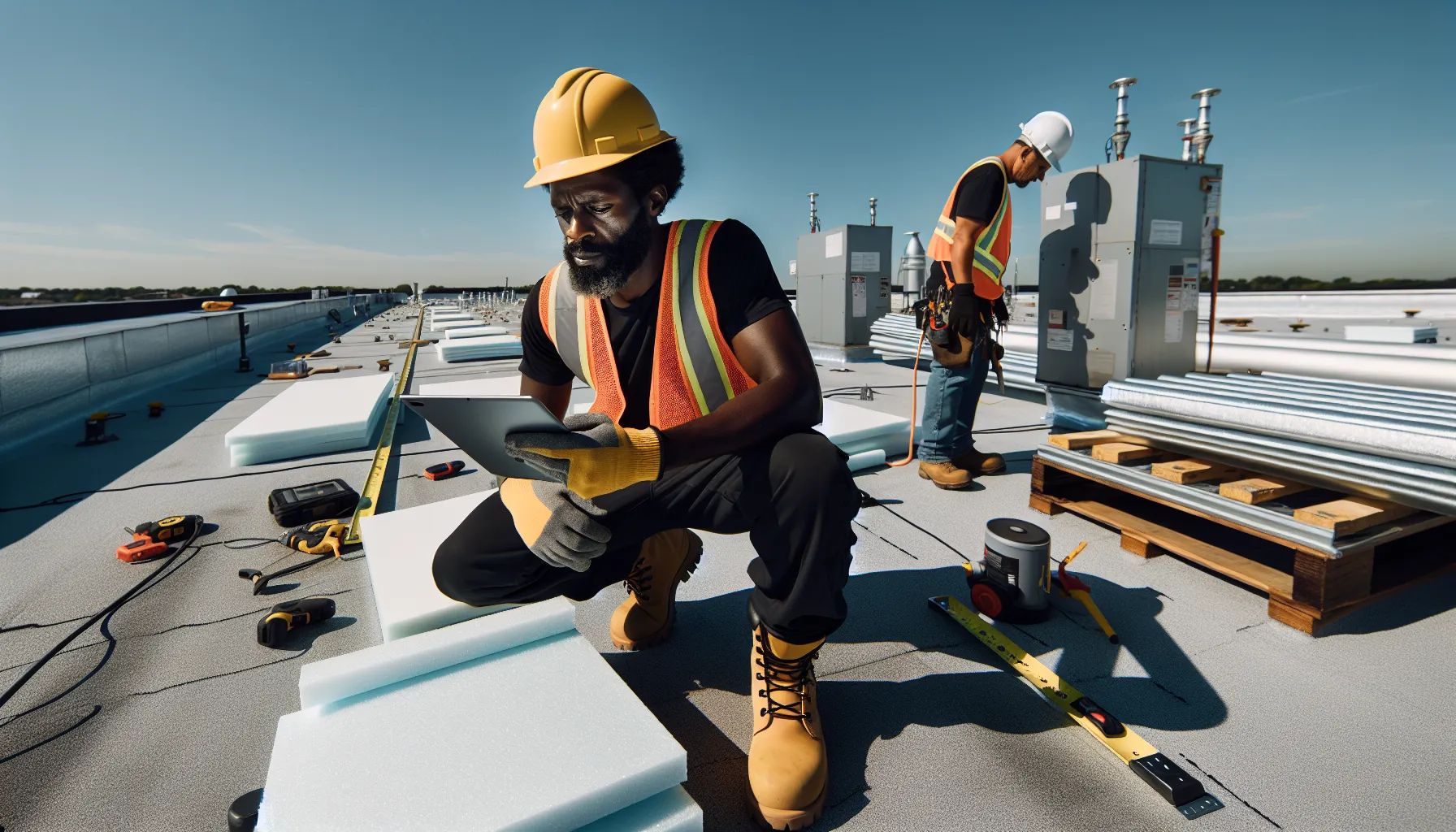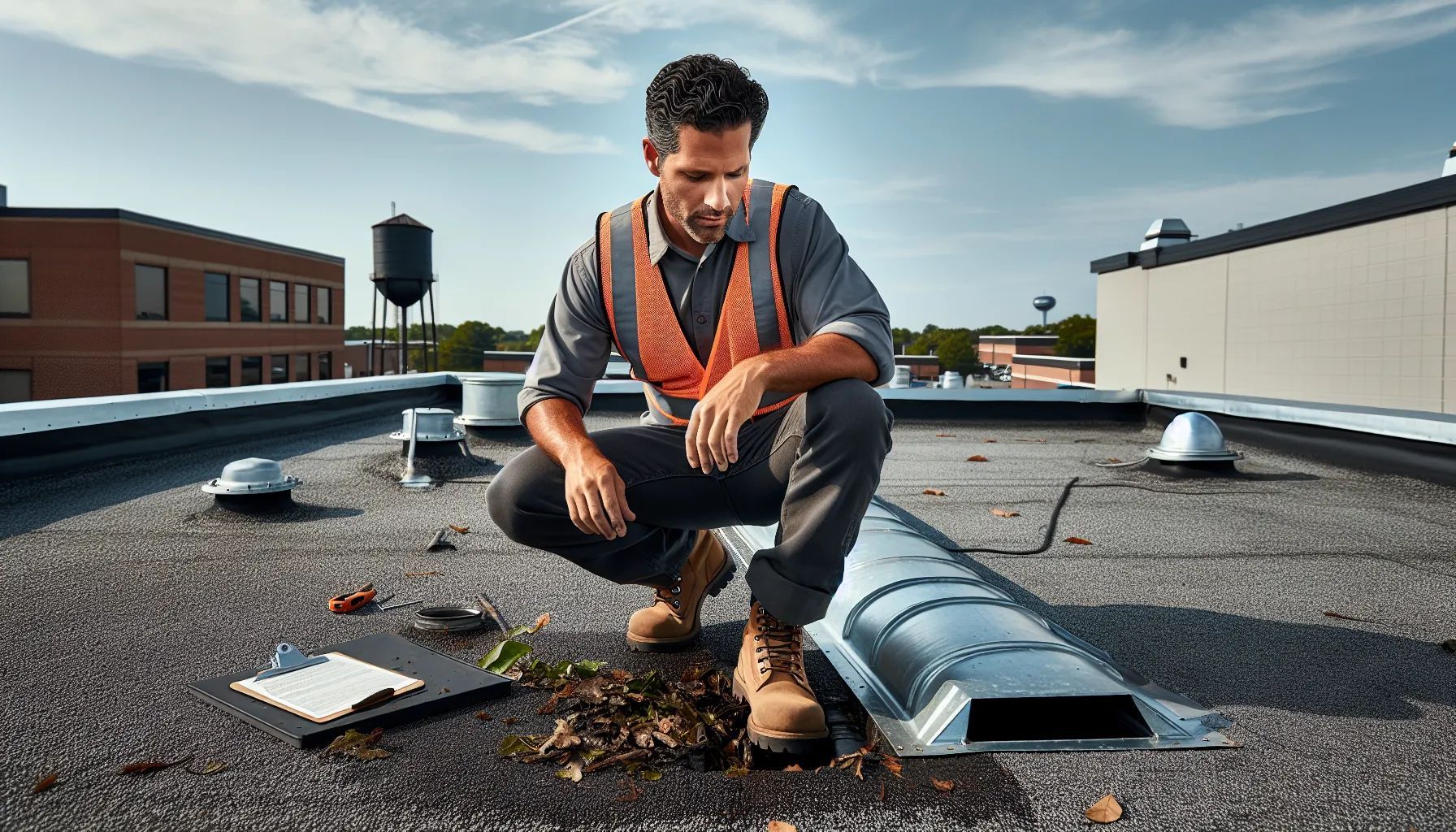Best Type of Metal Roof: Complete Guide to Materials, Costs & Top Picks for 2025
Annual Inspection Protocols
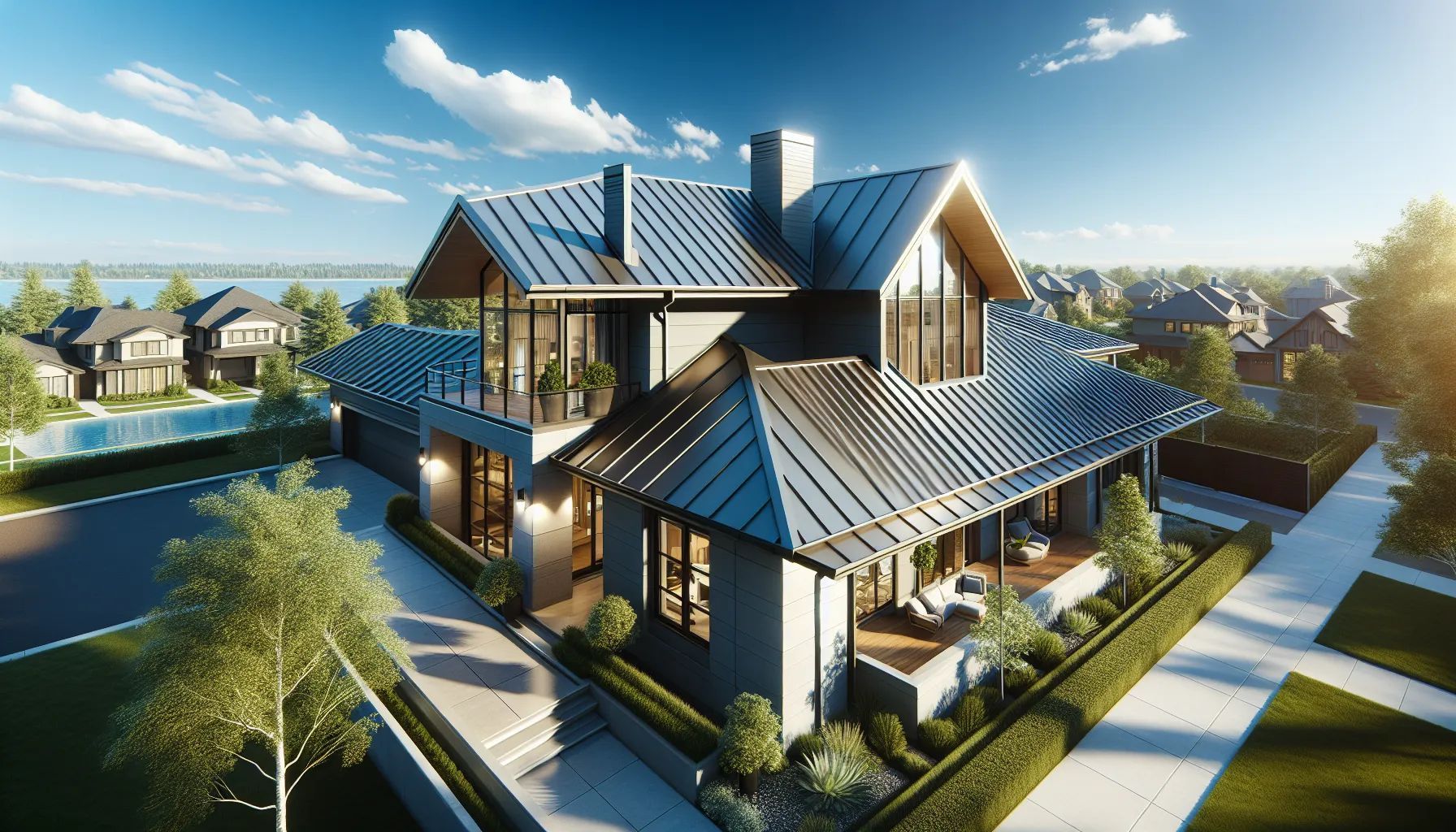
When it comes to choosing the best type of metal roof for your home or business we know the decision can feel overwhelming. With dozens of materials styles and price points available today's metal roofing market offers more options than ever before.
We've spent countless hours researching and comparing different metal roofing systems to help you make an informed choice. From traditional standing seam panels to modern stone-coated steel tiles each type brings its own set of advantages and considerations that can significantly impact your property's protection value and curb appeal.
Throughout this guide we'll explore the top metal roofing options available today examining their durability cost-effectiveness and unique features. Whether you're building new or replacing an existing roof we'll help you discover which metal roofing system delivers the best long-term value for your specific needs.
Understanding Metal Roofing Materials
Metal roofing comes in several distinct materials that offer different advantages for homeowners. We've analyzed the most popular options to help you make an well-informed choice based on your specific requirements and budget.
Steel Roofing Options
Steel remains the most common metal roofing material due to its affordability and durability. Galvanized steel features a zinc coating that protects against rust for 20-25 years. Galvalume steel combines zinc and aluminum coatings for enhanced corrosion resistance lasting 40-60 years.
Steel roofing costs $3-$14 per square foot installed. Standing seam steel panels range from $9-$14 per square foot. Corrugated steel panels cost $3-$7 per square foot.
| Steel Type | Lifespan | Lifespan |
|---|---|---|
| Galvanized | 20-25 years | $6-$16 |
| Galvalume | 40-60 years | $8-$20 |
| Stone-coated | 50-70 years | $16-$28 |
Stone-coated steel tiles combine steel's strength with aesthetic appeal. These tiles mimic wood shakes, clay tiles, or slate at a fraction of the weight. The acrylic coating contains ceramic granules that provide UV protection and noise reduction.
Aluminum Roofing Benefits
Aluminum roofing excels in coastal environments where salt spray causes rapid corrosion of other metals. This lightweight material weighs 50 pounds per 100 square feet compared to steel's 75-100 pounds.
Aluminum naturally resists rust without protective coatings. The material reflects 95% of solar radiation when unpainted, reducing cooling costs by 20-30%. Painted aluminum still reflects 85-90% of solar heat.
Aluminum roofing systems last 40-70 years with minimal maintenance. The material costs $6-$12 per square foot installed. Standing seam aluminum panels run $10-$12 per square foot. Aluminum shingles cost $6-$9 per square foot.
We recommend aluminum for homes within 10 miles of saltwater. The higher initial cost pays off through extended lifespan and energy savings. Aluminum's malleability allows fabrication into complex architectural designs.
Copper and Zinc Alternatives
Copper roofing develops a distinctive patina over 7-15 years that protects the metal for centuries. Historic buildings often feature copper roofs lasting 200+ years. The material costs $9-$14 per square foot for standard installations.
Zinc roofing self-heals minor scratches through its protective patina layer. European buildings showcase zinc roofs performing well after 80-100 years. Zinc costs $6-$10 per square foot installed.
Both metals require experienced installers familiar with thermal movement. Copper and zinc expand significantly with temperature changes. Proper fastening systems accommodate this movement to prevent buckling or tearing.
Standing Seam Metal Roofs
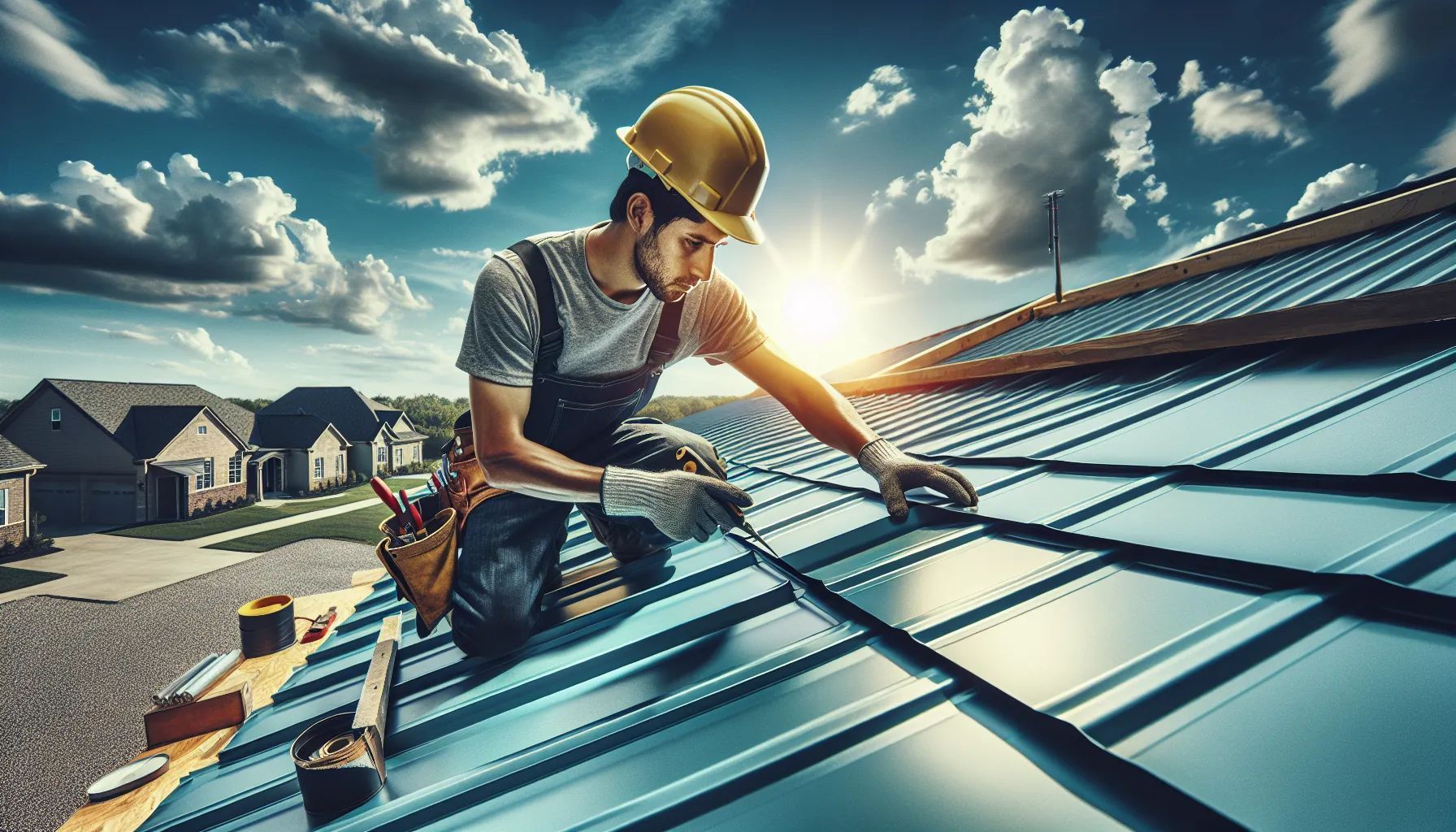
Standing seam metal roofs represent the gold standard in metal roofing systems. We've found these roofs deliver exceptional performance through their concealed fastener design and superior weather resistance.
Installation and Performance
Professional installers use specialized equipment to form and secure standing seam panels on-site. The installation process requires precise measurements and expert handling of metal forming machines. Installers typically charge $3.50–$12.00 per square foot for labor, accounting for 25% of total project costs.
Standing seam systems perform exceptionally in harsh weather conditions. The raised seams create watertight connections between panels, preventing leaks during heavy rainfall. These roofs withstand winds up to 140 mph when properly installed with appropriate clips and fasteners.
The concealed fastener system eliminates common failure points found in exposed fastener roofs. Thermal movement occurs naturally as metal expands and contracts, but floating clips allow panels to move freely without loosening fasteners. This design feature extends roof life by preventing stress cracks and fastener backout.
Energy performance improves significantly with standing seam roofs. Cool metal coatings reflect 70% of solar radiation, reducing cooling costs by 10–25% in warm climates. The smooth surface sheds snow efficiently in cold regions, preventing ice dam formation.
Cost Considerations
Standing seam metal roofs cost $10.00–$20.00 per square foot installed, making them premium roofing options. Material quality and panel width directly impact pricing. Narrow 12-inch panels cost more than standard 16-inch or 18-inch panels due to increased material and labor requirements.
Steel standing seam systems average $27,500–$42,700 for 2,000-square-foot homes. Galvalume panels offer cost savings at $9.00–$18.00 per square foot while maintaining 40–60 year lifespans. Paint finishes add $1.00–$3.00 per square foot but extend warranty coverage to 30–40 years.
Aluminum standing seam roofs cost $14.50–$20.00 per square foot, totaling $32,800–$51,300 for typical installations. The higher material cost delivers rust-proof performance and 50+ year service life. Coastal properties benefit from aluminum's salt-air resistance, offsetting initial investment through reduced maintenance.
Complex roof designs increase installation costs by 15–30%. Features like dormers, valleys, and multiple penetrations require custom fabrication and additional labor hours. Regional factors affect pricing, with labor rates varying $2.00–$5.00 per square foot between markets.
Metal Shingles and Tiles
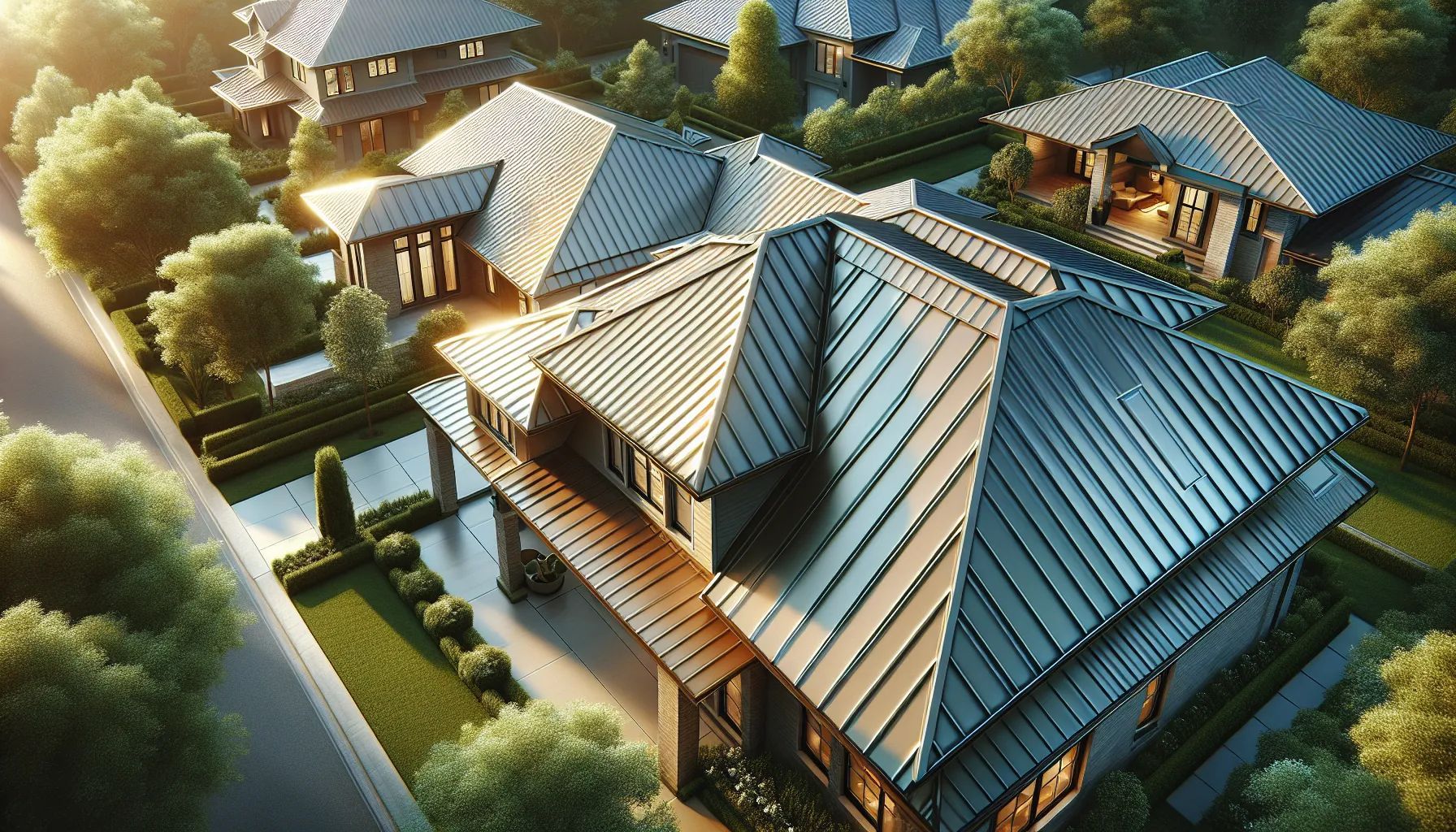
Metal shingles and tiles combine traditional roofing aesthetics with metal's superior performance characteristics. These products replicate the appearance of conventional materials while delivering enhanced durability and weather resistance.
Aesthetic Options
Metal shingles and tiles offer extensive design flexibility for residential and commercial properties. Manufacturers produce these materials in profiles that mimic wood shakes, slate tiles, clay tiles, and asphalt shingles. Steel and aluminum shingles accept various paint finishes and coating systems that create authentic textures and colors.
Stone-coated steel tiles feature acrylic-bonded stone granules that enhance visual appeal. These granules come in earth tones, terracotta reds, forest greens, and weathered grays. The textured surface creates shadow lines and depth that closely resemble traditional roofing materials.
Copper and zinc shingles develop natural patinas over time. Copper transitions from bright metallic orange to brown, then to verdigris green over 20-30 years. Zinc forms a protective gray patina within 6-12 months of installation.
Metal shingles accommodate various architectural styles. Victorian homes benefit from diamond-shaped copper shingles, Mediterranean properties suit barrel-shaped steel tiles, and contemporary designs pair well with flat-profile aluminum panels. Custom fabrication allows unique shapes and patterns for distinctive rooflines.
Durability Comparison
Metal shingles and tiles outperform asphalt shingles in every durability metric. Steel shingles withstand impact from hail up to 2.5 inches in diameter when properly coated. Aluminum shingles resist corrosion in coastal environments where salt spray destroys other materials within 10-15 years.
Wind resistance ratings for metal shingles reach 120-140 mph depending on installation methods. Interlocking designs create continuous barriers against uplift forces. Traditional asphalt shingles typically fail at wind speeds above 70-90 mph.
Fire resistance provides another advantage. Metal shingles achieve Class A fire ratings, the highest classification available. The materials don't ignite, spread flames, or release toxic gases during fire exposure. This protection proves valuable in wildfire-prone regions.
Temperature fluctuations affect metal shingles less than other materials. Thermal movement occurs predictably through expansion joints and fastening systems. Asphalt shingles crack and curl from repeated heating and cooling cycles. Metal maintains structural integrity through decades of temperature extremes, contributing to 50-70 year service lives compared to 15-25 years for asphalt alternatives.
Corrugated and Ribbed Panels
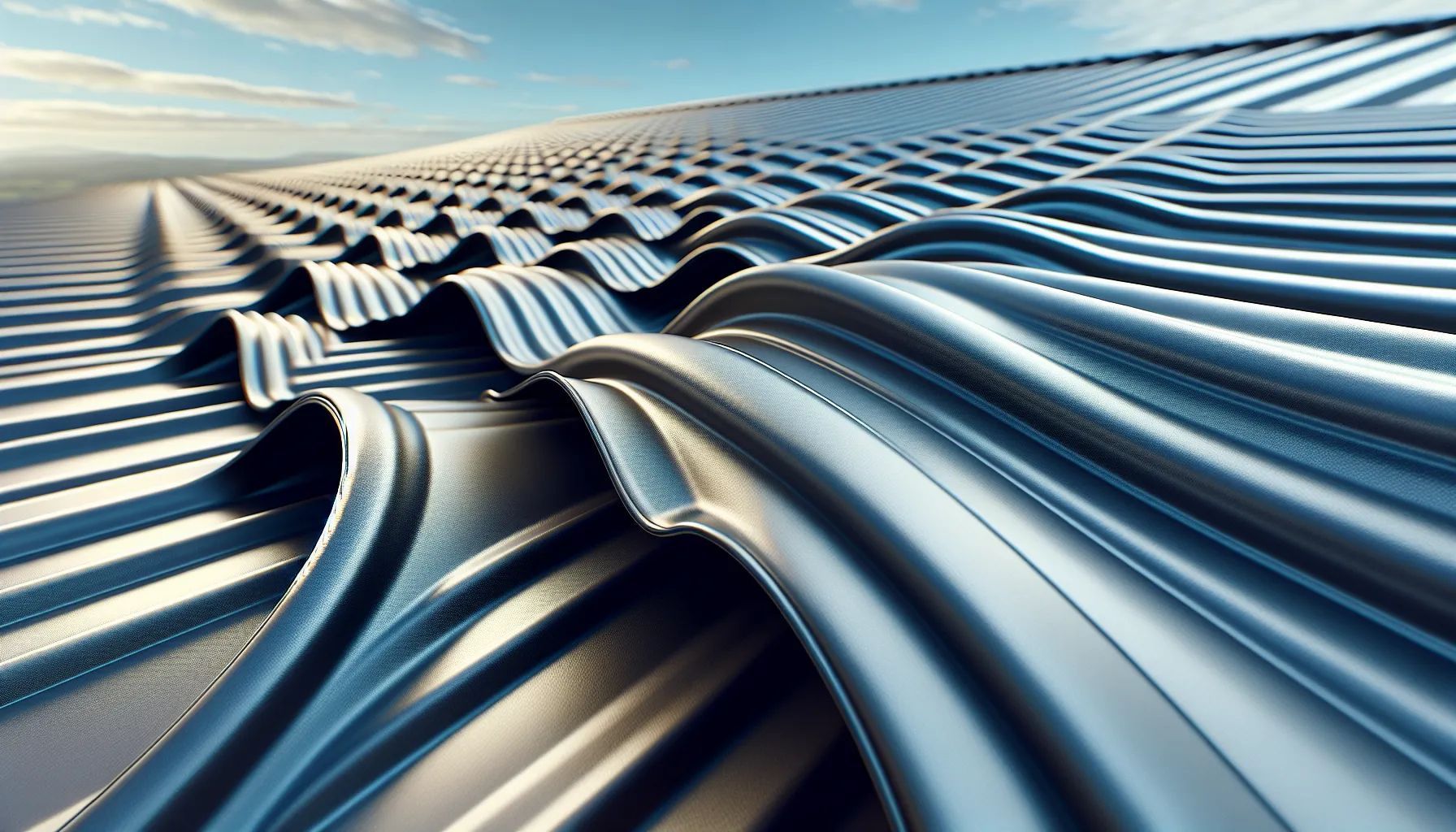
Corrugated panels feature a wavy S-shaped pattern that creates alternating ridges and valleys across the panel width. This classic profile originated in the 1820s and remains popular for agricultural buildings and residential projects.
The wave pattern provides structural strength through its geometric design. Each ridge typically measures 2.5 inches wide with 1.25-inch valleys between them. Standard panel widths range from 26 to 36 inches.
Ribbed Metal Panel Design
Ribbed panels display flat surfaces with raised vertical ribs running the entire panel length. The ribs stand 0.75 to 1.5 inches tall and space 9 to 12 inches apart on center.
This linear design creates clean sight lines that complement modern architectural styles. Panel widths vary from 24 to 42 inches depending on the manufacturer and rib configuration.
Cost Comparison
| Panel type | Material cost | Installation cost | Total cost per sq ft |
|---|---|---|---|
| Corrugated | $5.00-$9.00 | $4.00-$7.00 | $9.00-$16.00 |
| Ribbed | $6.00-$11.00 | $5.00-$8.00 | $11.00-$19.00 |
Corrugated panels cost 15-20% less than ribbed panels on average. A 2,000-square-foot corrugated roof costs $9,000-$16,000 installed. Ribbed panels for the same area cost $11,000-$19,000 installed.
Installation Methods
Both panel types use exposed fasteners that penetrate the panel surface directly into the roof deck. Installers place screws through pre-drilled holes in the panel ridges or ribs.
Corrugated panels require 80-90 fasteners per roofing square. Ribbed panels need 70-80 fasteners per square due to their wider flat sections. Both systems install faster than concealed-fastener standing seam roofs.
Weather Performance
Corrugated panels excel at shedding water due to their curved channels. The wave pattern directs rainwater into valleys that channel flow toward gutters. Wind ratings reach 110-120 mph for properly installed corrugated systems.
Ribbed panels provide superior snow shedding through their smooth surfaces between ribs. The vertical channels prevent snow accumulation and ice dam formation. Wind resistance ratings match corrugated panels at 110-120 mph.
Aesthetic Applications
Corrugated metal suits rural properties, barns, sheds, and homes seeking rustic character. The wavy profile complements farmhouse, industrial, and traditional architectural styles.
Ribbed panels fit contemporary homes, commercial buildings, and modern agricultural structures. The linear appearance pairs well with minimalist design elements and clean architectural lines.
Maintenance Requirements
Both panel types require annual inspections focusing on fastener integrity. Exposed screws need checking for looseness, worn gaskets, and corrosion every 12 months.
Panel surfaces benefit from biannual cleaning to remove debris and prevent organic growth. Touch-up paint addresses minor scratches before rust develops. Properly maintained panels last 40-60 years in most climates.
Climate and Weather Considerations
Climate conditions directly impact metal roof performance and longevity. We've analyzed how different metal roofing materials respond to various weather patterns to help property owners select the most suitable option for their specific region.
Best Options for High Wind Areas
Aluminum and steel metal roofs provide exceptional wind resistance in hurricane-prone regions. Aluminum performs particularly well in coastal areas due to its natural corrosion resistance combined with structural integrity. These roofs withstand wind speeds up to 140 mph when installed with concealed fastener systems.
Steel roofing offers superior strength-to-weight ratios, making it ideal for high-wind zones. Galvalume steel combines the structural advantages of steel with aluminum's protective coating, creating a dual-benefit system. Installation methods significantly affect wind performance - standing seam and corrugated panels with proper fastening systems outperform exposed fastener alternatives
Wind uplift resistance depends on panel profile and attachment methods. Standing seam roofs with 24-gauge steel panels and clip spacing at 12-18 inches provide optimal protection. Corrugated aluminum panels with 0.032-inch thickness deliver comparable performance at 25% less weight than steel options.
Energy Efficiency Savings
Aluminum roofing reflects up to 95% of solar radiation, reducing cooling costs by 10-25% in warm climates. Annual energy savings average $200-$500 for a 2,000-square-foot home with aluminum roofing. Steel with reflective coatings achieves 70-85% solar reflectance, translating to $150-$400 yearly savings.
Cool roof coatings add $0.75-$1.50 per square foot but increase energy savings by 15-20%. Federal tax credits cover 30% of qualified metal roofing installations through 2032. State rebates provide additional savings of $500-$2,000 in participating regions.
Maintenance Cost Projections
Steel roofing requires recoating every 15-20 years at $2-$4 per square foot. Aluminum needs minimal maintenance, with cleaning costs of $0.10-$0.25 per square foot annually. Copper and zinc develop protective patinas naturally, eliminating coating requirements.
Annual inspection costs average $150-$300 for professional assessment. Minor repairs cost $300-$800 per incident, occurring every 10-15 years on average. Major repairs range from $1,500-$5,000 but remain rare with proper installation.
Insurance Premium Benefits
Metal roofing reduces homeowner's insurance premiums by 5-35% depending on location and carrier. Hurricane-prone regions offer the highest discounts, with annual savings of $300-$1,200 on typical policies. Fire-resistant ratings qualify for additional discounts in wildfire zones.
Impact-resistant certifications (Class 3 or 4) provide further premium reductions of 10-20%. Documentation requirements include manufacturer specifications, installation certificates, and inspection reports. Insurance savings accumulate to $15,000-$60,000 over the roof's lifespan.
Return on Investment Analysis
Metal roofing increases home value by 1-6%, with copper and zinc commanding the highest premiums. Average ROI ranges from 60-85% for steel and aluminum, reaching 95% for premium materials in luxury markets. Resale value improvements average $12,000-$25,000 for typical residential properties.
Payback periods vary by material choice and local energy costs. Steel roofing achieves cost neutrality in 12-18 years through combined energy and insurance savings. Aluminum reaches payback in 10-15 years, while copper requires 20-25 years even though higher initial costs.
Choosing the Right Metal Roof for Your Home
We evaluate multiple factors when selecting metal roofing materials for residential properties. Each metal type offers distinct advantages in durability, cost, and performance characteristics.
Regional Climate Factors
Climate conditions determine optimal metal roofing choices. Coastal areas require aluminum roofing due to its superior salt corrosion resistance. Properties near oceans benefit from aluminum's protective oxide layer that prevents rust formation.
Mountain regions demand steel or galvalume roofing for snow load capacity. These materials support 40-60 pounds per square foot of snow weight. Steel panels maintain structural integrity at temperatures reaching -30°F.
Desert climates benefit from aluminum's heat reflectivity. Aluminum roofs reflect 95% of radiant heat compared to steel's 70% reflectivity rate. This reflectivity reduces cooling costs by 25-40% during summer months.
Aesthetic Preferences
Modern metal roofing offers extensive design flexibility. Steel panels accommodate 40+ standard colors with Kynar 500 finishes. Custom colors increase costs by 15-25%.
Copper roofing develops patina coloration over 8-10 years. The green-blue patina creates distinctive architectural character. Some homeowners prefer pre-patinated copper to achieve immediate visual impact.
Stone-coated steel tiles replicate traditional roofing aesthetics. These products mimic wood shakes, clay tiles, and slate appearances while providing 50-year lifespans.
Material Performance Comparison
We analyze performance metrics across popular metal roofing options to guide selection decisions.
Durability and Lifespan
Metal roofing materials demonstrate varying longevity:
- Copper: 70-100+ years
- Zinc: 60-80 years
- Aluminum: 40-50 years
- Steel: 30-50 years
- Galvalume: 40-60 years
Proper installation extends these lifespans. Fastener quality affects overall durability. Stainless steel fasteners outlast galvanized alternatives by 20-30 years.
Weight and Structural Requirements
Lightweight metals reduce structural stress on existing buildings. Aluminum weighs 0.7 pounds per square foot compared to steel's 1.5 pounds. This weight difference matters for retrofit projects on older homes.
Copper's 1.8 pounds per square foot requires structural evaluation before installation. We recommend engineering assessments for homes built before 1980 when considering copper roofing.
Corrosion Resistance
Salt spray testing reveals material performance differences:
- Aluminum: 5,000+ hours without corrosion
- Galvalume: 2,000 hours before white rust
- Galvanized steel: 500 hours before red rust
- Painted steel: 1,000-3,000 hours depending on coating
Coastal properties within 3 miles of saltwater require aluminum or high-grade stainless steel. Interior regions accommodate standard steel products effectively.
Energy Efficiency Benefits
Metal roofing reduces energy consumption through reflective properties and emissivity ratings.
Reflectivity Ratings
Cool roof coatings enhance metal roof performance:
| Material | Solar reflectance | Thermal emittance | Energy Star Qualified |
|---|---|---|---|
| White aluminum | 0.82 | 0.85 | Yes |
| Light steel | 0.67 | 0.82 | Yes |
| Natural galvalume | 0.61 | 0.25 | Yes |
| Copper (new) | 0.72 | 0.04 | Yes |
High reflectance values reduce heat absorption. A 0.82 reflectance rating prevents 82% of solar radiation from entering the building.
Insulation Integration
Metal roofs accommodate various insulation systems. Above-sheathing ventilation creates 1.5-inch air gaps that reduce heat transfer by 30%. Rigid foam insulation adds R-values of 5-8 per inch.
Radiant barriers beneath metal roofing reflect 97% of radiant heat. This combination reduces attic temperatures by 20-30°F during summer months.
Maintenance and Care
Regular maintenance extends metal roof lifespans and maintains appearance.
What is the most affordable metal roofing material?
Steel roofing is the most budget-friendly option, typically costing $7-12 per square foot installed. Galvanized and Galvalume steel offer excellent durability at lower price points compared to premium materials like copper or zinc. Corrugated steel panels provide the lowest cost option, being 15-20% less expensive than ribbed panels.
How long does metal roofing typically last?
Metal roofing generally lasts 40-70 years depending on the material. Steel roofs last 40-60 years, aluminum 50-70 years, while premium copper and zinc can exceed 100 years with proper maintenance. This significantly outlasts traditional asphalt shingles, which typically need replacement after 15-25 years.
Is standing seam metal roofing worth the extra cost?
Yes, standing seam roofing justifies its $10-20 per square foot cost through superior weather resistance, concealed fasteners, and minimal maintenance needs. The system prevents leaks, withstands 140 mph winds, and reflects up to 70% of solar radiation, reducing cooling costs by 10-25% annually.
Which metal roofing is best for coastal areas?
Aluminum roofing is ideal for coastal environments due to its natural corrosion resistance and immunity to salt spray damage. It won't rust like steel and maintains its protective properties without special coatings. Copper is another excellent coastal option but comes at a premium price.
Do metal roofs reduce energy costs?
Metal roofs can significantly reduce cooling costs by reflecting 70% of solar radiation compared to 20% for asphalt shingles. Light-colored metal roofs with reflective coatings can lower cooling expenses by 10-25% annually. The energy savings often offset higher initial costs within 10-15 years.
What maintenance does metal roofing require?
Metal roofing requires minimal maintenance - typically annual inspections, debris removal, and checking fasteners or seams. Unlike asphalt shingles, metal roofs don't need frequent repairs or replacement. Regular cleaning and touch-up painting every 10-20 years keeps them in optimal condition.
Are metal roofs noisy during rain?
Modern metal roofs aren't significantly noisier than other roofing materials when properly installed with solid sheathing and insulation. The decking, underlayment, and attic insulation dampen sound effectively. Noise levels are comparable to asphalt shingles in most residential applications.
We inspect metal roofs twice yearly for optimal performance. Spring inspections identify winter damage. Fall inspections prepare roofs for harsh weather.
Key inspection points include:
- Fastener tightness and gasket condition
- Sealant integrity at penetrations
- Panel alignment and thermal movement
- Gutter attachment security
- Flashing condition at transitions
Cleaning Requirements
Metal roofs require minimal cleaning compared to other materials. Annual washing removes dirt accumulation and prevents finish degradation. We use low-pressure water (under 1,500 PSI) with mild detergents.
Copper and zinc develop protective patinas naturally. Cleaning these metals removes beneficial oxidation layers. We recommend leaving copper and zinc surfaces untouched except for debris removal.
Warranty Considerations
Metal roofing warranties vary by manufacturer and material type.
Material Warranties
Manufacturers offer different warranty periods:
- Paint finish: 20-40 years against fading and chalking
- Substrate: 25-50 years against perforation
- Accessories: 10-20 years for fasteners and trim
Premium warranties cover labor costs for defective materials. Standard warranties cover materials only. The price difference averages $0.50-1.00 per square foot.
Installation Warranties
Certified installers provide workmanship warranties separate from material coverage. These warranties typically span 2-10 years. We verify installer certifications before hiring to ensure warranty validity.
Weather-related damage usually falls outside warranty coverage. Homeowners insurance policies cover storm damage to properly installed metal roofs.
Making Your Final Decision
We recommend prioritizing factors based on specific property needs. Coastal homes require corrosion resistance above cost considerations. Budget-conscious projects benefit from galvalume's value proposition.
Professional consultations provide customized recommendations. Roofing contractors assess structural capacity, local weather patterns, and aesthetic goals. This assessment guides material selection for optimal long-term satisfaction.
Metal roofing investments pay dividends through energy savings, reduced maintenance, and extended service life. The right choice depends on balancing upfront costs with lifetime value while meeting performance requirements for your specific location and preferences.
Conclusion
Choosing the right metal roof isn't just about picking what looks good – it's about finding the perfect balance between your budget and long-term performance needs. We've seen how each material brings its own strengths to the table and understanding these differences makes all the difference in your decision.
Your location plays a huge role in determining which metal roofing material will serve you best. Whether you're dealing with salty coastal air or heavy mountain snowfall there's a metal roofing solution engineered to handle your specific challenges.
Remember that while initial costs might seem steep the energy savings and minimal maintenance requirements often offset the investment within years. We recommend getting multiple quotes from certified installers who specialize in your chosen material since proper installation directly impacts your roof's performance and longevity.
Take time to consider warranty terms and maintenance schedules before making your final choice. With the right metal roof you'll protect your property for decades while potentially increasing its value and reducing your environmental footprint.
